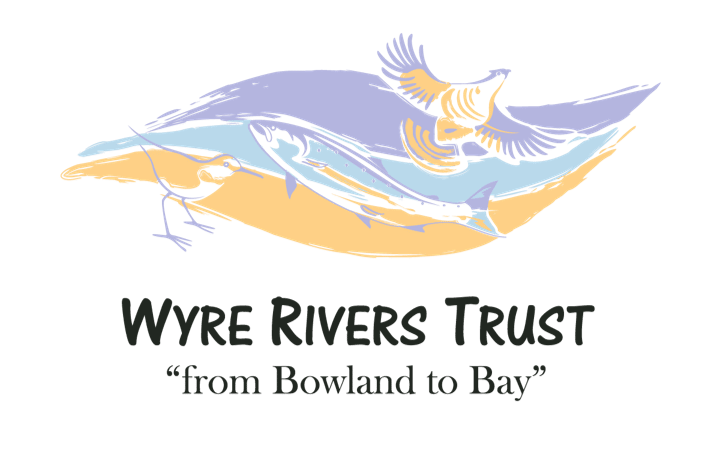Project Overview
The Wyre Catchment NFM project is the first example in the UK of private investment enabling the delivery of natural flood management. The project will deliver more than 1,000 targeted measures to store, slow and intercept flood water and prevent peak flow in a catchment in England, with the interventions hosted by local farmers. Beneficiaries of the reduced flood risk are paying for the interventions, and the Project’s Community Interest Company has successfully raised a nine-year £850k private loan facility to help fund the interventions.
Acknowledgements
With many thanks for their time and insight on this case study:
Dan Turner, Technical Lead, Land Management and Market Creation, The Rivers Trust
Dan Hird, Principal and Founder, Nature Finance
Thomas Myerscough, General Manager, Wyre Rivers Trust
Date published: 08/12/2022
Origins of the project
The Wyre Catchment NFM project was started after Storm Desmond hit the UK in 2015, flooding 5,200 homes. In 2016, United Utilities, Flood Re, the Environment Agency (EA), and The Rivers Trust started to explore how to implement natural flood management (NFM) solutions on a wider scale as a potentially more cost-effective alternative to ‘grey’ infrastructure like reservoirs and weirs.
The Wyre catchment in North Lancashire was chosen for several reasons. Namely, it faced a high-flood risk, with a one-in-50-year flood event occurring four times in the last 20 years. Furthermore, ‘grey’ flood defences would not provide any significant reduction in flood risk, as demonstrated by a prior feasibility analysis by the EA. Whereas, the upper catchment, predominately consisting of upland farming, provided significant opportunity to deliver a catchment scale NFM intervention. Furthermore, the Wyre Rivers Trust had already been delivering NFM in the area, building strong, trusted working relationships with farmers and land managers.
A core scoping team was put together from across the Rivers Trust, the Wyre Rivers Trust, Triodos Bank UK, the EA, United Utilities, Flood Re, Co-Op Insurance and the Esmée Fairbairn Foundation.
Funding for Project Development
Some early scoping costs were covered by members of the project team, such as the initial hydrological study (see below). However, when the project team was confident that this project could feasibly benefit from private finance, it sought external development funding.
In 2018, the EA, Defra, Esmée Fairbairn Foundation and Triodos Bank UK put together a pilot programme to fund nature projects that aimed to attract private investment. Wyre NFM was one of the four projects, and a package of development grant funding was announced in 2020. In conjunction with Natural Course, a 10 year EU LIFE Integrated project, this funded the development of the project to ‘investment readiness’.
Early intervention scoping
United Utilities commissioned a hydrological study of the catchment by Viridian Logic, an ecological consultant based in Brighton. This took three months to complete. The study showed that interventions in specific areas, such as hedgerow planting and leaky barriers, could reduce the flood risk of the area. This data underpinned the project’s scientific model that mapped the NFM opportunities.
Other ecosystem services, such as carbon sequestration and biodiversity were discussed, but the focus at this stage remained on flood risk reduction. This was due to the overall ambition of the project, and the indication from the data that potential revenue streams from other ecosystem services would be minimal.
Dan Turner, Technical Lead at the Rivers Trust, advises that project developers should keep time spent on early modelling proportionate to the size of the project, as this can take a long time and there are many ways to analyse ecological data.
An initial desk-based study of the hydrology model took around one month. After ruling out interventions that were not feasible through constraints checking (e.g., tree planting in protected sites), the team focused on those interventions within the top 5% of flood risk reduction effectiveness.
‘Ground truthing’ interventions
The Wyre Rivers Trust then led a ‘ground truthing’ exercise on these interventions. This meant more detailed scoping, including the direct (on the ground) observation of the sites where the interventions were proposed. This exercise took around three months. The Wyre Rivers Trust’s catchment knowledge and existing relationships with local land managers made it best positioned to undertake this.
Some of the ground truthing included desktop research, for example determining the sites under protected status. However, much of the activity was based on site inspection and talking to the land managers, who were mainly farmers. A common topic of discussion was agri-environment schemes, which many sites were under, and therefore there were constraints as to whether they could implement the interventions within existing schemes (See Milestone 2).
Turner comments that early engagement with land managers is essential, but it is important not to raise expectations prematurely. Mindful of this, the Wyre Rivers Trust instead developed a broader farm plan for each farmer that set the potential to diversify income streams with nature-based projects. This included flood risk reduction but also carbon credits, nutrient mitigation and biodiversity net gain. Farmers were receptive, and the plans confirmed where interventions were possible and what constraints needed to be addressed. The farm plans also supported another pipeline of projects for the Wyre Rivers Trust to consider outside of the project, such as potential nutrient mitigation opportunities.
Cost and Income Scoping
To develop a cost base, the project team again used the Wyre Rivers Trust’s local knowledge and experience. As it had been delivering interventions in the catchment over many decades, the Wyre Rivers Trust was able to provide estimates of both upfront costs and maintenance costs of the interventions. Land managers would need to be paid to host these interventions, but figures on these were less clear and were developed later in the project (See Milestone 2).
On the income scoping side, the majority of buyers were involved at the project’s start and had a strong interest in paying for reduced flood risk. However, Turner comments that revenue figures were not discussed until much later, as the project took a ‘reverse engineering’ approach to the financials. “Instead of starting by sizing demand, we focused first on the target reduction in flood risk, the capital cost of the interventions, what we would need to pay farmers, how much it would cost to operate a special purpose vehicle and then the costs of servicing the initial investment required. This reverse engineering process developed through a fairly simple integrated financial model then made it possible to discuss a specific annual revenue requirement with the buyer group directly,” he says.
Triodos Bank UK also acted as a financial advisor, in line with the development funding that the project received. It focused on the commercial elements of the project, immediately starting to build the financial model and the business plan (See Milestone 5).
Photo credit: the Wyre Rivers Trust


